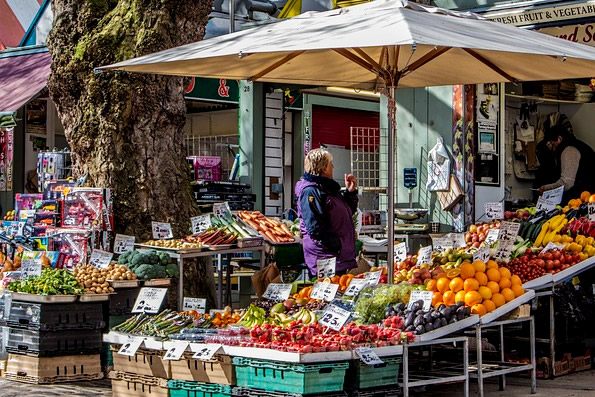先日から「How to make fruit and vegetables last longer -「野菜や果物を長持ちさせる方法」を読んでいます。

・「野菜や果物を長持ちさせる方法」(1)
・「野菜や果物を長持ちさせる方法」(2)
・「野菜や果物を長持ちさせる方法」(3)
Build a barrier
バリアーを築くOne potentially promising technology is edible coating:
有望な技術の一つが食用コーティングで、
covering fruits and vegetables in a film of protective material that can be consumed with the food.
野菜や果物を保護膜で覆い、そのまま食べることができる「可食性コーティング」がそれだ。
Modern commercial coatings have come on a fair way since the early soy and lard experiments in Japan, England and elsewhere.
日本やイギリスなどで大豆やラードによる実験が行われた時代から、現代の市販のコーティング剤はかなり進歩している。
Coatings based on beeswax or paraffin took off in 1930s, when waxing fruits such as apples became popular.
蜜蝋やパラフィンを使ったコーティングは1930年代、リンゴなどの果物にワックスを塗るのが流行したことから始まった。
Apples have a natural wax coating when they are picked from the tree, though this is often lost in the washing process.
リンゴは木から収穫された時点で天然のワックスコーティングが施されているが、これは洗浄の過程で失われてしまうことが多い。
Today, an artificial coating is often reapplied to apples, oranges, lemons and other fruits to help conserve moisture and extend shelf life.
現在はリンゴやオレンジ、レモンなどの果物の多くに、保湿や賞味期限延長のために人工的なコーティングが施される。
While these are pretty good at limiting dehydration of produce, there is still great room for improvement.
これらは食材の脱水を抑えるという点ではかなり優れているが、まだまだ改善の余地がある。
To create perfect edible coatings scientists are now experimenting with many different substances,
食用に適したコーティングを作るため、科学者たちは様々な物質を使って実験中で
from silk fibroin (protein secreted by silk worm) and chitosan (a sugar from the outer skeleton of shellfish), to cashew gum, fish gelatine, fenugreek protein, soy protein, cellulose and algae derivatives – the list goes on.
シルクフィブロイン(カイコから分泌されるタンパク質)やキトサン(貝の外骨格に含まれる糖質)、カシューガム、魚ゼラチン、フェヌグリークプロテイン、大豆タンパク質、セルロース、藻類誘導体など、数え上げればキリがない。
algae「藻類」。
derivative「(本源から)引き出した、派生的な、新しさの欠けた、派生物、派生語、誘導体」。
食べられるコーティングというのは面白いですね。
身体に影響無いのかどうか、消費者はそこを必ず気にするので、科学者もそこを意識して開発中なのでしょうね。
パッケージ業界にとっては脅威となりそうですが、一消費者としてはゴミが減るのは大歓迎です。
理由は単純明快!「少ないコストでしっかり楽しく学べるから」。
私自身の経験(高機能でビックリ)をびっしり書いていますので、良かったら読んでみてください。
下のバナーからどうぞ!






